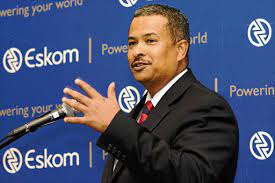Significant impact, but severe challenges
The year 2014 marked the end of the second decade since South Africa’s democratic transition in 1994. In this time its generating fleet capacity grew from 37 636MW to 41 995MW and power lines from 238 964km to 359 337km.
The proportion of households with access to electricity rose from 44% to 85% and more than 200 000 households were electrified.
In an internal publication, CEO Brian Dames noted that Eskom’s primary job is to provide an uninterrupted supply of electricity to support economic growth and improve the quality of lives.
The publication also traced its impact on the country since its establishment 90 years earlier:
- It is the region’s growth engine
- It is one of the largest employers and buyers of good and services
- Employment opportunities were created in local communities
- It is a significant user of natural resources, which requires prudent management
- It enables economic and social development
- It is a catalyst for change, a driver of innovation through its research and development, training and education.
Yet the integrated report noted that Eskom was facing significant challenges which threaten its financial sustainability, mainly due to insufficient returns on assets, substantial cost increases, lower sales volumes and a lack of cost-effective tariffs.
This was made worse by the need to simultaneously fund construction of Medupi, Kusile and Ingula as well as the expansion of the transmission network. Eskom warned that it had to operate within its financial means.
A negative was the downgrading by all three primary rating agencies of the utility’s investment rating.
An Inter-Ministerial Committee approved a package of support measures: support for the tariff application to Nersa, a R20bn equity injection, government guarantees to raise a further R50bn, demand management measures and assistance to municipalities to improve their efficiencies.
Load-shedding was introduced which meant that expensive open-cycle gas turbines had to be used.
Municipal arrear debt continued to rise, but the campaign to reduce electricity losses and theft was beginning to work.
Nersa allowed Eskom to recoup R7.8bn of its under-recoveries and approved a tariff increase of 13%.
However, a significant funding gap remained.
Construction of Medupi was delayed because of ongoing industrial action.
Yet total procurement spend amounted to R67bn of which 75% went B-BBEE compliant suppliers; the Kriel-Matla mine water project reached final feasibility stages and progress was made on the Mokolo and Crocodile water augmentation programme; some power stations were reaching the capacity limits of their ashing storage and Eskom was looking to buy available land; it introduced an extensive retrofit programme to reduce emissions; Koeberg set a new record for uninterrupted operations; there was progress at the Sere Wind Farm where 46 wind turbines were installed; and the European Investment Bank agreed to finance contract to support the solar plant near Upington.
The main coal silo at Majuba collapsed. Load-shedding was implemented to meet demand.
Substantial investments were required because of the expensive coal delivered by some mines.
Eskom received several accolades: for its environmental initiatives and the quality of its integrated report.
- The Eskom Development Foundation completed construction projects at schools in Limpopo and Mpumalanga.
- Tshediso Matona was appointed CEO in August.

